Vaccines against infectious diseases save millions of lives. See how U.S. innovators are contributing to global efforts to stop COVID-19 and other diseases.
September 2021
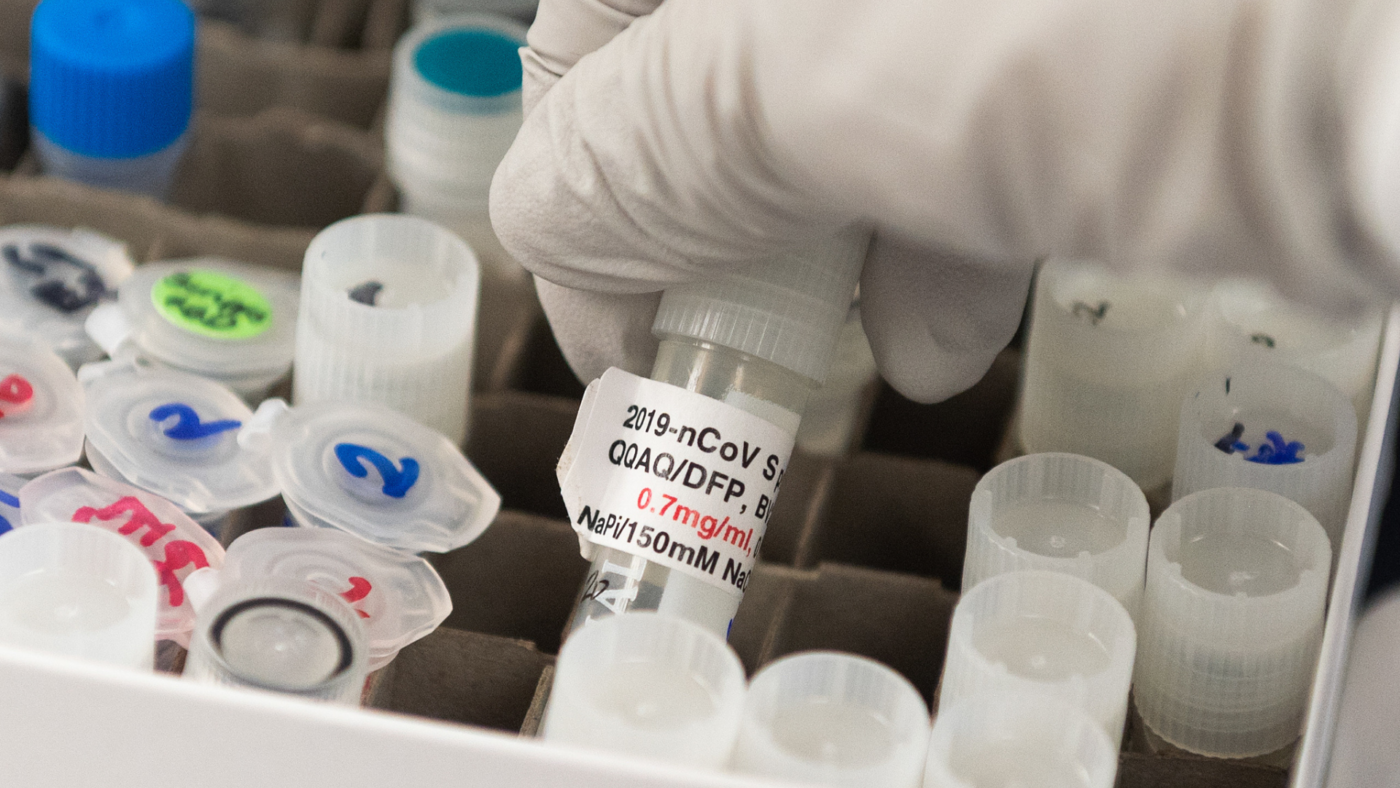
The vial seen here March 20 contains a potential COVID-19 vaccine developed at the Novavax company in Rockville, Maryland. (© Andrew Caballero-Reynolds/AFP/Getty Images)
Vaccines have helped limit the spread of many deadly diseases and enabled us to eradicate smallpox. Innovators in the United States, Germany, the United Kingdom and other countries have developed safe and effective vaccines against COVID-19 that are helping fight the pandemic.
U.S. pharmaceutical firm Moderna and German-based BioNTech, in partnership with U.S.-based Pfizer, have developed the first messenger RNA vaccines that have proven highly effective in preventing COVID-19. U.S. producer Johnson & Johnson has developed a single-dose vaccine that is also helping reduce cases of COVID-19 globally.
The United States is donating 610 million doses of vaccines to low- and middle-income countries and economies. Most of the donations are through the COVAX Facility, an international partnership dedicated to distributing vaccines equitably. The U.S. has also contributed $4 billion to Gavi, the Vaccine Alliance, in support of COVAX.
President Biden’s call for America to serve as an “arsenal of vaccines” for the world builds on U.S. investments in biomedical research and innovators’ decades-long efforts to control and eradicate infectious diseases worldwide.
Polio paralyzed hundreds of thousands of children annually before Jonas Salk, an American physician, medical researcher and virologist, developed a vaccine in 1955. A massive global vaccination effort has reduced cases of polio 99 percent between 1988 and 2013, according to the U.S. Centers for Disease Control and Prevention. With continued vaccinations, polio could become the next fully eradicated disease.
Measles killed an estimated 2.6 million people worldwide each year before John Enders, an American biomedical scientist and Nobel laureate, developed a vaccine in 1963. Today, there are far fewer cases: Measles caused roughly 142,000 deaths globally in 2018, the CDC says.
U.S. researchers continue to develop vaccines for other diseases.
Middle East Respiratory Syndrome (MERS)

Scientists identified antibodies to the MERS virus in dromedary camels, an important step toward developing a vaccine. (© Hiro Komae/AP Images)
MERS spread to the United States in 2014 after first appearing in humans in the Arabian Peninsula in 2012. Scientists have learned how the virus (MERS-CoV) causes the disease and have begun developing potential vaccines.
The National Institute of Allergy and Infectious Diseases says one of the potential vaccines for COVID-19 moved quickly to clinical trials because it was adapted from a vaccine under development to protect against MERS.
Ebola
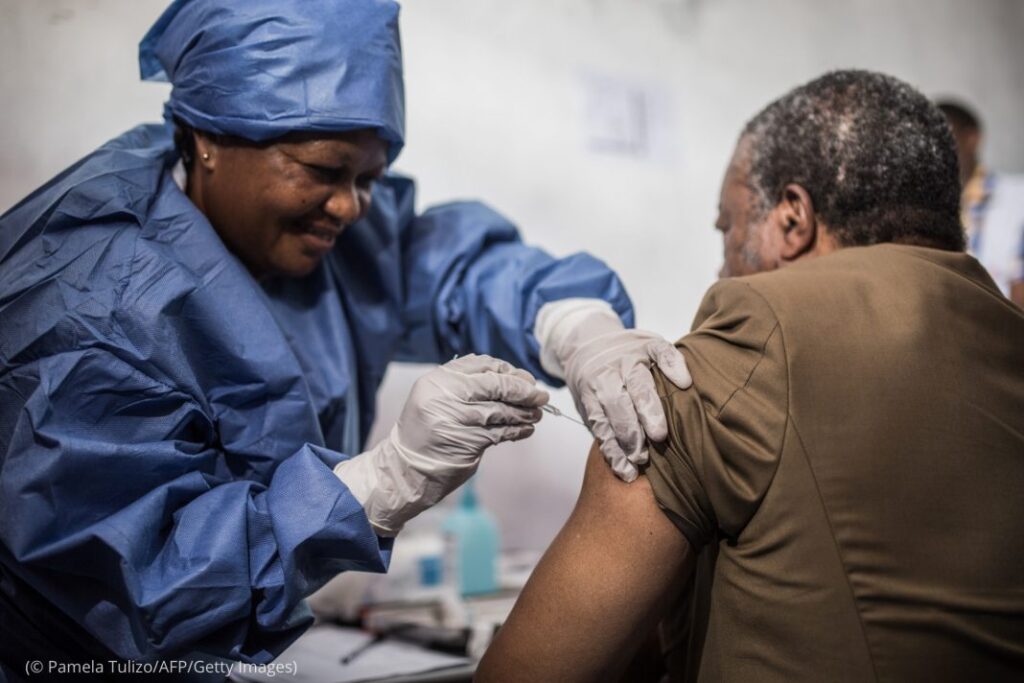
A health care worker vaccinates Doctor Jean-Jacques Muyembe Tamfum against Ebola in November 2019 in Goma, Democratic Republic of the Congo. (© Pamela Tulizo/AFP/Getty Images)
Ebola virus disease can cause fever, internal bleeding and death. The virus is transmitted between humans through contact with bodily fluids. Outbreaks have occurred primarily in Africa, including in the Democratic Republic of the Congo and Guinea in 2021.
U.S. and European regulators in recent years approved U.S. pharmaceutical firm Merck’s vaccine against the Zaire strain of the disease. The United States has been the largest single country donor to Ebola response efforts and supports national preparedness and response activities in countries with outbreaks.
Zika
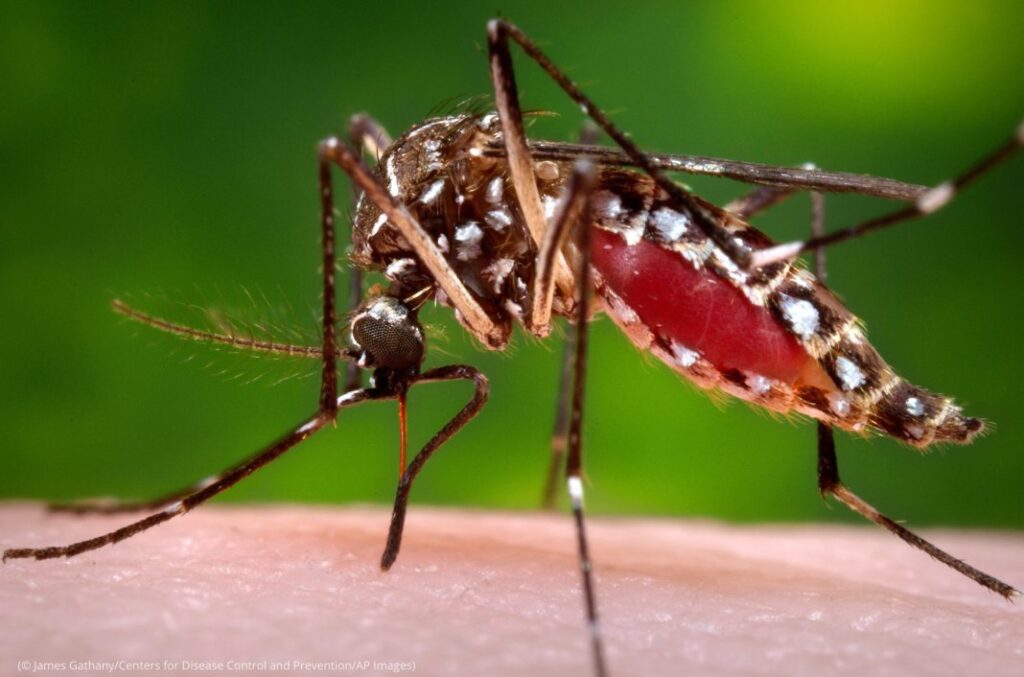
Aedes aegypti mosquitoes like this one spread Zika, chikungunya, dengue fever and other serious diseases. (© James Gathany/CDC/AP Images)
The Zika virus is primarily transmitted by mosquitoes and led to thousands of children being born with birth defects in the Western Hemisphere in 2015 and 2016.
The U.S. Defense Department’s Walter Reed Army Institute of Research has made rapid progress toward a vaccine for Zika and began clinical trials in late 2016.
NIAID scientists developed an experimental vaccine and began testing it in clinical trials in March 2017.
Malaria
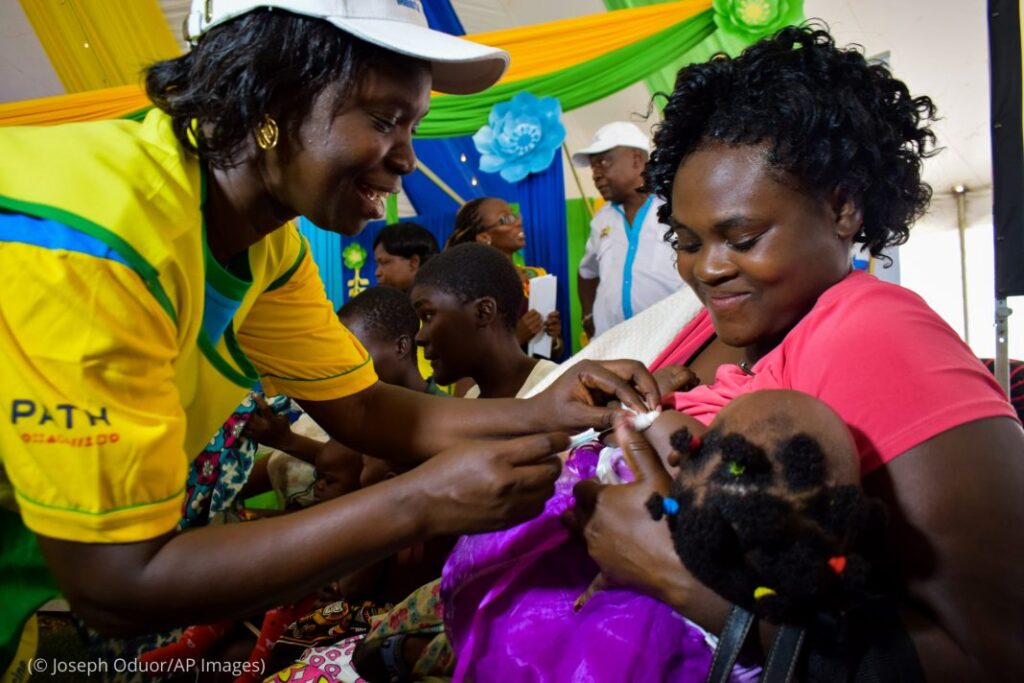
A health worker vaccinates a child against malaria in Homa Bay County, Kenya, in September 2019. (© Joseph Oduor/AP Images)
Another mosquito-borne illness, malaria, poses a risk to half the world’s population, 3.4 billion people. The disease was killing 700,000 people annually in Africa before President George W. Bush launched the U.S. President’s Malaria Initiative in 2005. By 2017, through expanded distribution of therapeutics and preventive measures such as bed nets, malaria deaths had dropped by more than half to roughly 300,000 annually.
U.S. researchers are also part of an international effort to develop a vaccine that has proven 77 percent effective in preventing malaria in children between 5 and 17 months old.
Tuberculosis
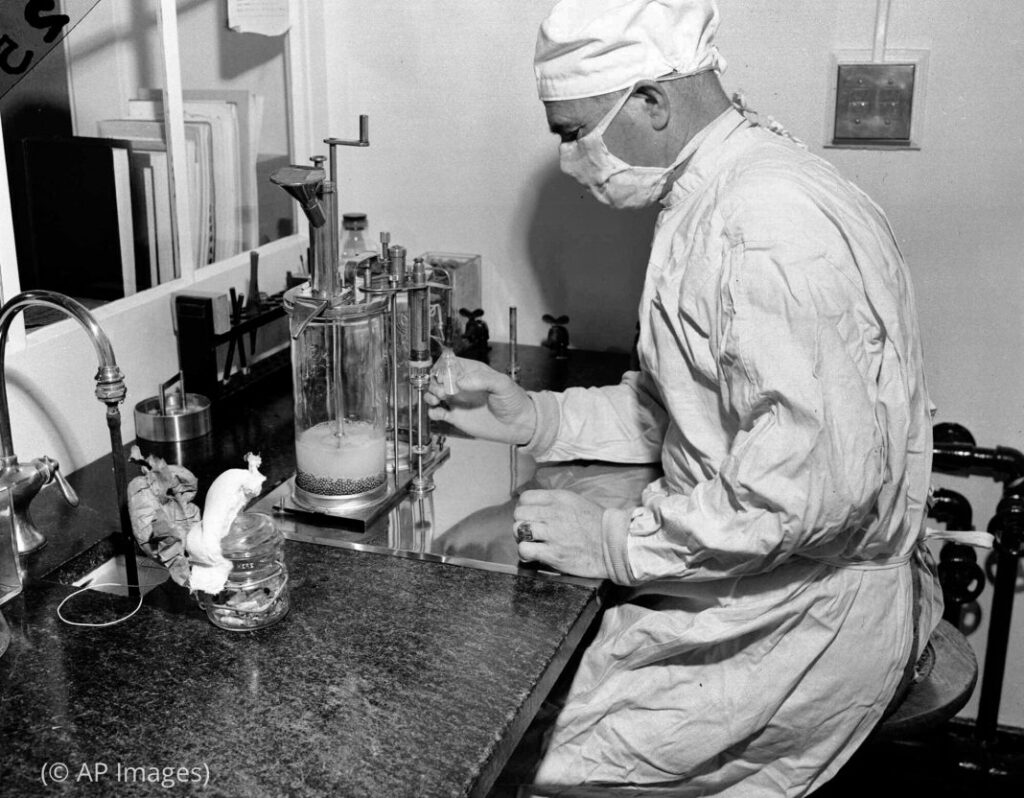
While researching a new vaccine, scientists revisited vaccines for TB and polio to see if they offered any protection against COVID-19. (© AP Images)
TB is caused by bacteria that attack the lungs. It’s spread from person to person when an infected person sneezes or coughs germs into the air. The disease kills 1.5 million people per year, and has surpassed AIDS as the world’s leading infectious cause of death.
An existing vaccine has limited efficacy. That’s why NIAID funds research into vaccines and treatments. Several potential vaccines have shown success in animal studies and are undergoing clinical testing.
Article courtesy ShareAmerica
COMMENTS